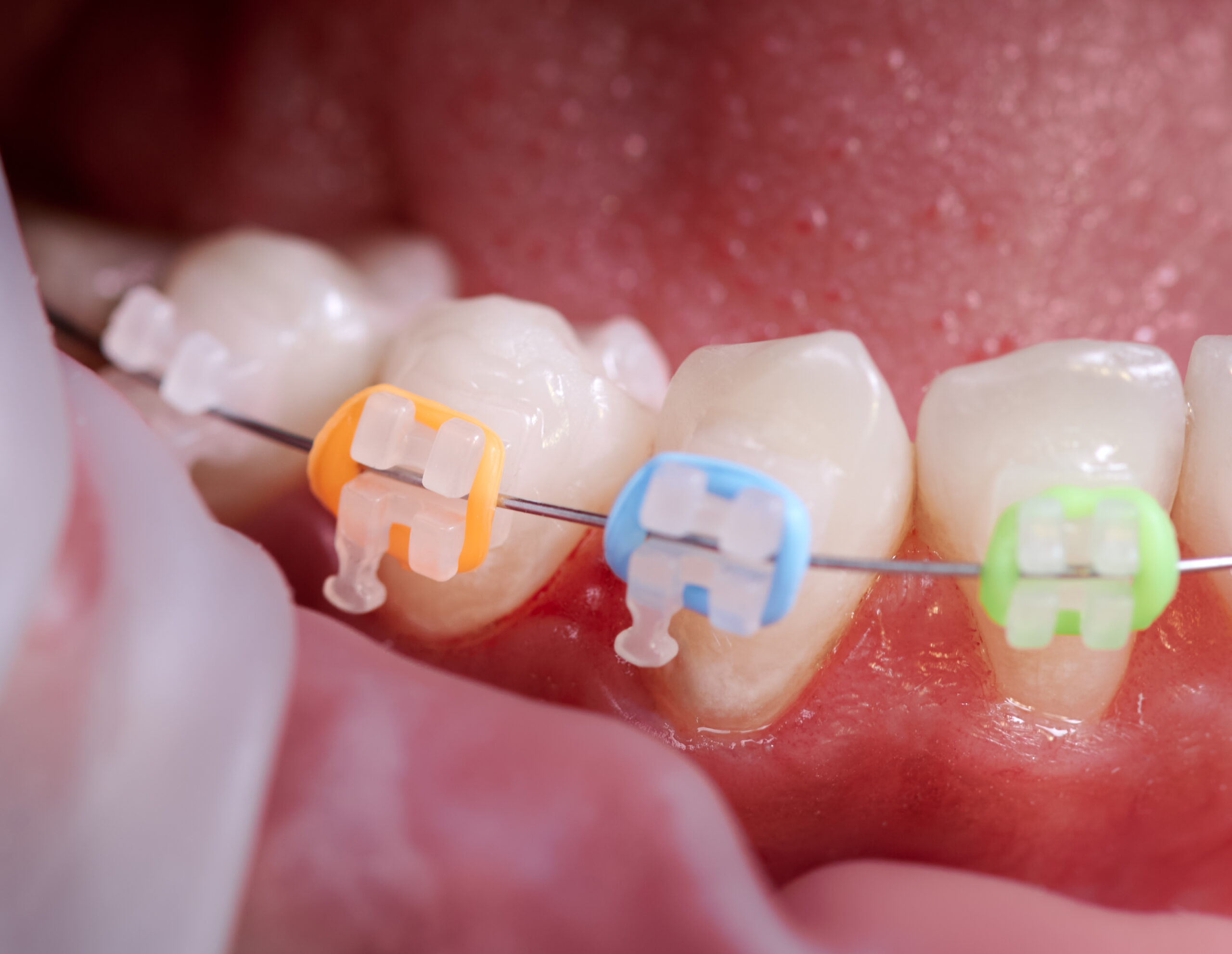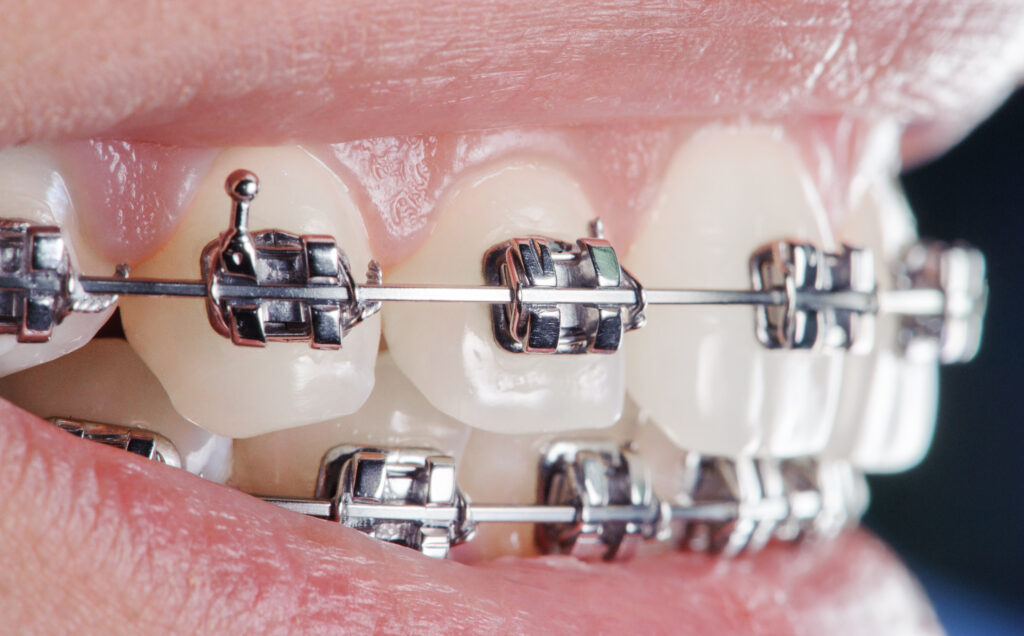Braces – is it still too late?

At what age does it make sense to put braces?
People with a malocclusion often ask themselves: “Can I also correct my smile at my age?” And the following thought involuntarily arises: “No, it’s probably too late. I’m already an adult to wear braces.” However, the concept of “adult” is very vague. Both a 17-year-old man and a 50-year-old man consider themselves adults. At what age can you start correcting your bite and can adults count on the fact that they can still change their smile at 40 or 50?
Let's think together.
What is an underbite?
In dentistry, an overbite is the closing of the teeth of the upper and lower jaws. Accordingly, a correct bite is when the teeth close evenly, and an incorrect bite is when the teeth "fit" into each other.
There are several main causes of malocclusion: incorrect growth of teeth; displacement of teeth due to the removal of neighboring ones; various developmental anomalies of the upper or lower jaw. If the first two causes can be dealt with without any surgery, the third is treated in combination, by orthodontists and maxillofacial surgeons.
How do braces work?
The principle of operation of braces is based on metal with shape memory. Initially, the braces have a certain configuration, then they are installed on the teeth that have grown incorrectly, and these devices tend to take their original shape, shifting the teeth along with them.
What are braces?
There are two main types of braces: external and internal. The former are placed on the outer surface of the teeth, while the latter are placed on the inner surface (so-called lingual braces).
Braces can be made of various materials, from metal and ceramics to precious metals and sapphires. Of course, the effectiveness of the treatment does not change from this, but, for some patients, gold braces with sapphires pleasantly please their pride and look more aesthetically pleasing.
From what age can braces be installed?
In adolescence, molars finish their formation, which means they can already withstand an unnatural load for the body. If braces are installed before 12-14 years of age (depending on the individual development of bone tissue), there is a high risk of resorption of the not fully formed roots. This is a serious disorder that can lead to tooth loss. To prevent this from happening, braces should be installed only after a complete diagnosis.
There are a number of points that are important for every parent to consider before starting orthodontic correction of a child's malocclusion.
1. Braces should not be placed before the second molars erupt. This is necessary so that the teeth take the correct position. Otherwise, there is a risk of them erupting outside the dentition, which leads to an increase in the time of correction and relapses.
2. Before setting up an orthodontic system, it is worth checking the condition of the internal and perioral muscles. It is important to know in advance whether there are dento-jaw anomalies, whether there is disproportionate development of muscle or bone tissue.
3. It is necessary to check how the load on the teeth occurs. This is important for preventing relapses. If some teeth close before others, the risk of their re-curvature increases. This information is important for building a competent correction plan and establishing its most accurate timing.


Duration of treatment
On average, treatment lasts one and a half to two years, depending on the degree of bite disturbance. Active treatment with braces is only the first stage. After they are removed, so-called retainers are installed on the teeth - a special wire that prevents the teeth from moving back to their original position. Retainers are invisible to others and the patient himself, but you can’t do without them even in the simplest case.
Despite the presence of some difficulties, it is worth noting that in adolescence any changes in the bite occur much faster and easier than in 40 or 50 years old. In a child, the course of correction takes 1-1.5 years, and for an adult - this is the minimum time frame. Most often, it takes 2-3 years to establish a bite. If we talk about the retention period, then it lasts at least five years. Most doctors believe that to prevent relapses in adulthood, it is necessary to put permanent retainers or wear mouthguards every night after the correction.
The most effective way to correct a malocclusion is during adolescence. However, you can get a healthy and beautiful smile at 30, 40, and 50. What goals do people pursue at this age? How is correction done in adults?
Children go to the orthodontist because their parents take them. Adults have their own reasons that make them take care of their health and appearance. Some want to have a perfect smile, others are caused by problems caused by anomalies of the dento-maxillary department. In addition, after 40, many people begin to think about implantation, and in this case it is also important to have the right bite.
Anyone who is going to get braces at age 30 or later needs to know the following information.
- Age is not a contraindication. Braces can not only be, but also should be put in any period of life, regardless of how old you are. The only thing that matters is the condition of the teeth. Over the years, the correction period certainly increases. This is due to the fact that metabolic processes in the body begin to slow down. Also, do not forget that the growth of bone tissue has already ended by this time, so the correction cannot proceed as quickly as in a child.
- To achieve ideal results, it is often necessary to remove teeth. This should not be feared, because surgical intervention is necessary only because there are no other options at the moment. After 30, there is often no room in the oral cavity for the correct arrangement of teeth, so without surgery, the bite simply cannot be corrected.
- Not all braces are suitable for adults. Orthodontists usually recommend using metal braces, as they are the most durable and provide a minimum wearing period. However, for many people, a radical change in appearance is a very big sacrifice. In this case, ceramic braces are put in. Sapphire braces are a bad option for adults. They are quite fragile, and also slow down the correction time.
- Braces are not the only option for correcting a bite. Now a new correction system is available using the so-called aligners. They are made of transparent silicone and look like ordinary removable mouthguards. It is difficult to say how long you will have to wear them, as it depends on both age and the nature of the anomaly. Aligners are worth looking into for those who are ready to be patient and not take off these mouthguards for a long time.
- The most popular braces are lingual models. They differ from external orthodontic systems in the way they are attached. Lingual braces are installed on the inside of the teeth, so they remain invisible to others. If you wish, you can completely hide the fact that you are correcting uneven teeth. The main thing is to get used to the device (it will take no more than a week and a half). Lingual braces can be installed regardless of how old you are. The main contraindication is only one - insufficient height of the teeth.
Now you know that bite correction can be performed at any age, there are practically no restrictions and contraindications for this. Decide to change your appearance for the better and improve your health.
It depends only on you how long it will take to achieve a healthy and beautiful smile.
Join us 😘
Be the nextHappy Patient
We have already helped hundreds of patients restore dental health and a beautiful smile. Your perfect smile is closer than you think. Let's create it together!






